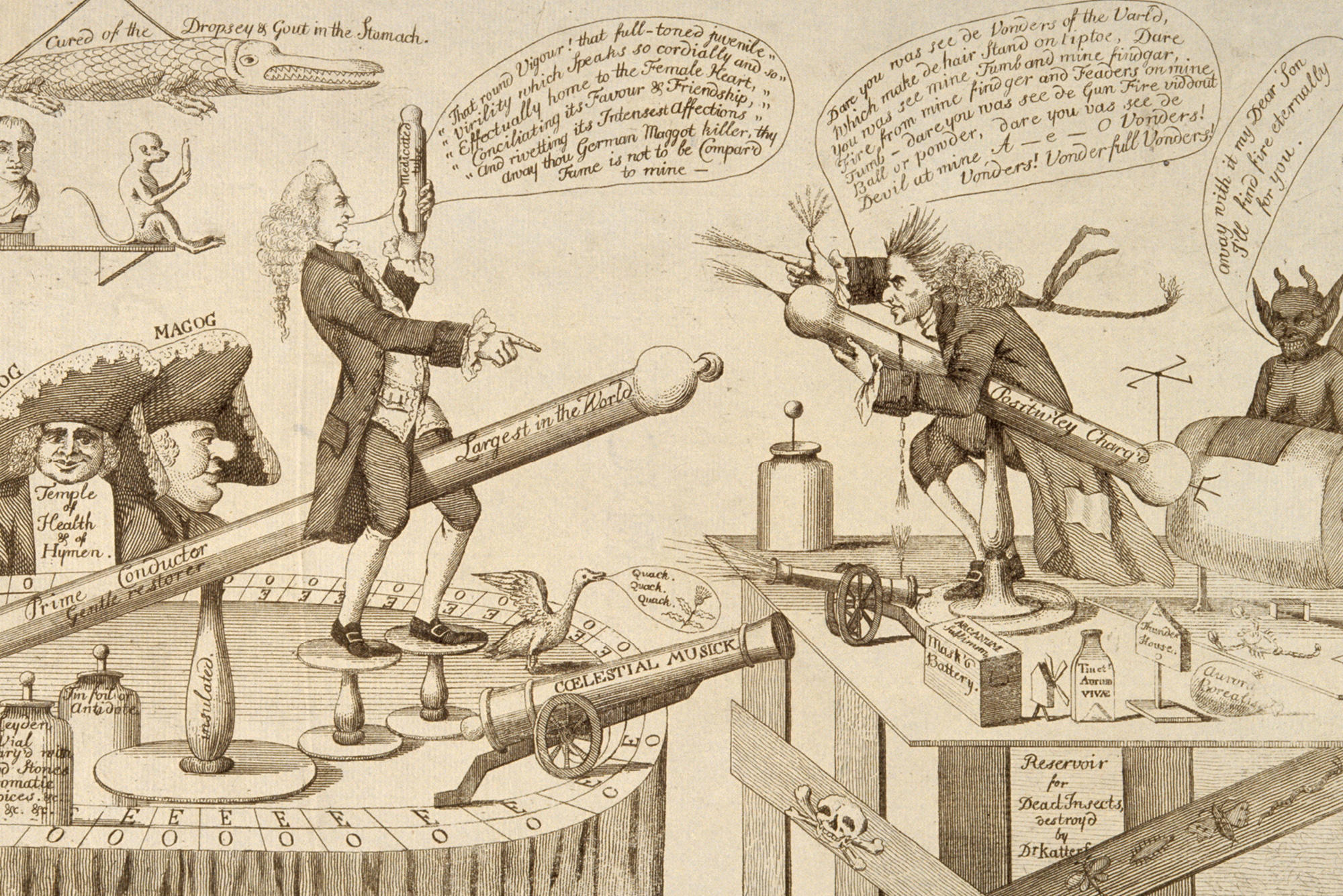Love Quack
The venereal electrics of Dr. James Graham
Christopher Turner

Liveried carriages pulled up outside a row of grand Georgian townhouses, which backed onto the Thames near Blackfriars Bridge. Two guards, reportedly seven feet tall, stood either side of the front door to keep out the curious crowds as aristocratic couples entered, the ladies with their faces veiled. The burly porters were nicknamed Gog and Magog, after the giant effigies that led the Lord Mayor’s annual procession, and wore large, gold-laced cocked hats and carried long staffs with elaborate silver tops. The frieze below the building’s pediment was inscribed in gold, “Templum Aesculapio Sacrum” (Temple of Health). It was described by one visitor, who happened to be the Royal Fencing Master, as a “modern Paphos,” after the reported birthplace of Aphrodite, Greek goddess of love.
In 1780, it seemed that all London society turned out to hear Dr. James Graham, a thirty-five-year-old Scottish physician who claimed to be “not only a doctor of medicine, but a physician of the soul.” He sat on a crimson throne in his Grand Apollo Chamber, a room lavishly decorated with allegorical symbols and an enormous sparkling golden dragon, which seemed to breathe fire. Graham’s assistant was Emma Lyon, a striking beauty who later became Lady Hamilton and Nelson’s mistress. She was dressed in flowing, classical robes and sandals, the supposed embodiment of “Vestina, the rosy Goddess of Health.” To the accompaniment of flutes, an organ, and a harmonica, she sang: “Hail! Vital Air — Ethereal! — Magnetic Magic — Hail! … The Soul is Love — Joy — Peace — and Health! And thou, celestial Fire! — Thou, FIRE ELECTRIC! — GREAT RENOVATOR! — THE LIFE OF ALL THINGS! HAIL!”
The apparent source of Graham’s great power was a huge electrical conductor, an unmistakably phallic totem that was eleven feet long and four wide, and capped by two semi-circular globes. It stood on pillars of cut and colored glass in the center of Graham’s Aladdin’s cave, surrounded by mirrors, crystals, and gilded ornaments that reflected and refracted the light. Every evening, between 8:30 and 10:30, Graham conducted a “display of the Apparatus,” which he used to summon up a phantasmagoria of electrical and magnetic forces, dazzling his audience with “celestial meteors” and frequent “loud and tremendous” explosions. At the end of his talk on the health benefits of the “electrical aether,” the audience received an electric shock by means of conductors hidden under the auditorium’s seat cushions.